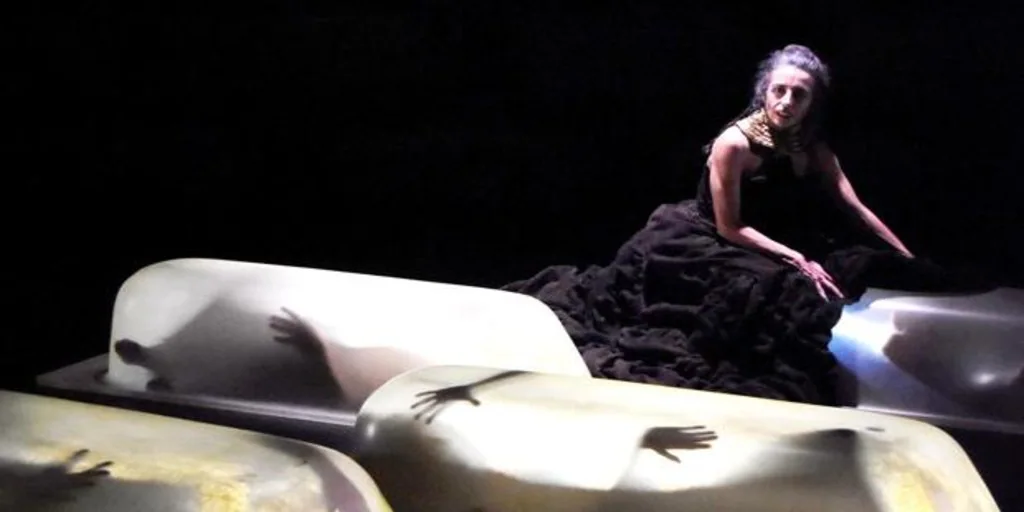save
Everything revolves around number 25 in the new Atalaya production, revenge raised to high blood that goes back to a time that did not exist, but that different societies have evoked in different ways. A quarter of a century has passed since the premiere of his first “Electra”, one of the great Andalusian theater productions of the last decades that preceded “Medea” and “Ariadna”. The montage which is presented this Saturday and Sunday at 12 noon in the Central Theater, in addition, will be the twenty-fifth of the company. There are also 25 centuries that have passed since the birth of the Greek poet Euripides and the years that have elapsed since the death of the playwright Heiner Müller, with whose “Elektratext” this show begins, which is, of course, entitled “Elektra.25”.
The myths, as Octavio Paz points out in the essay “The bow and the lyre”, suppose the “invocation and convocation of the original time. And, more exactly, recreation of archetypal time ». That is why they are not governed by the laws of chronology or history. They are ideal scenarios, models that are once again present when someone decides to take them again, revive them. On this occasion, under the direction of Ricardo Iniesta, the mythological character Electra is recovered, which in the 20th century allowed the conclusions of a psychological study that led to the definition of the complex of the same name. This was born as a counterpart to that of Oedipus. That is, it refers to the Affective attraction of the girl for the father and her separation from the mother. Do you know the story that came through the works of authors such as Homer, Sophocles, Aeschylus and the aforementioned Euripides who resort to this figure?
The story speaks of revenge and hatred. Death, too. Of betrayal within the family and the breaking of umbilical ties. In summary, the daughter of AgamemnonKing of Mycenae, and his wife, Clytemnestra, generates a perhaps understandable repulsion towards her mother when she murders her father. That is the conflict that blinds you and that moves you. The fact that ultimately has brought us to this paragraph and this work with the intention of recalling the myth: thirst for blood. This time, in the version of Sophocles, who here sculpted the tragedy that much later would inspire Shakespeare to write “Hamlet.”
Lights, action
The live music, theater and an eloquent commitment to the visual they combine in this spiral where violence reigns. Silvia Garzón, María Sanz and Raúl Vera will interpret the three most important characters: Electra, Klitemestra and Egisto, although the stage will be a continuous recital of faces that give the plot twists and novel resolutions. According to Iniesta, in addition to the increased prominence of Orestes, son of the same marriage separated by the crime, “a new choir is also introduced that appears on more than one occasion, made up of the palace maidens, who are mostly suspicious of Elektra . This is another stress factor added to the previous version and part of Hofmannsthal’s work. All these new contributions raise the complexity of the plot, excessively simple in the first version.
In the wake of the calamities of that world at once ancient and timeless, Atalaya asks the viewer a question: what would you do in such a case? A question that flies over a dramaturgy that between fire, cadmium and the dagger walks in circles. Tinted with rancor. Armed for the evil of Humanity.
See them
comments
– .


